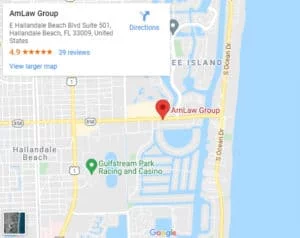Optimizing Your US Visa Application: A Guide for Immigrants and Non-Immigrants
The United States offers a variety of visa options for immigrants and non-immigrants alike. Whether you seek permanent residency, temporary work authorization, or the chance to invest in a growing economy, navigating the application process can be daunting. However, with careful preparation and strategic planning, you can significantly improve your chances of a successful outcome.
This guide explores key tips to optimize your US visa application, covering both immigrant and non-immigrant visa categories with a focus on EB-5 (investment), E-2 (treaty investor), and L-1 (intracompany transfer) visas.
For All Visa Applicants:
- Eligibility is Key: The first step to a successful application is understanding the specific requirements for your desired visa category. Carefully discuss the eligibility criteria and needed supporting documents with an experienced attorney. Clients often feel it’s sufficient to review the USCIS website (https://www.uscis.gov/) to receive the needed information, but (perhaps not too surprisingly) the USCIS website provides far from all the needed or critical information to make an accurate assessment of the actual process and criteria.
- Seek Professional Guidance: Immigration laws can be complex, and visa applications involve extensive documentation. We strongly recommend consulting with a reputable immigration attorney specializing in your desired visa category. For example, attorneys specializing in asylum cases very often have limited or no experience with investor cases–and vice-versa. Their expertise is invaluable in navigating the process, identifying potential pitfalls based on their professional experience, and ensuring your application is complete and accurate.
- Gather Strong Supporting Documentation: USCIS relies heavily on supporting documents to assess your eligibility and application merits. Gather all required documentation well in advance and ensure it’s well-organized, authentic, and property translated into English (you can’t imagine how many times clients try to save on translations, and the quality of the translations they provide is very poor, which most likely affects the outcome of their case!).
- Meet the Financial Requirements: Many visa categories have specific financial requirements. For example, E-2 visas require a substantial investment in a US business, while EB-5 visas require a significant investment amount. Demonstrate your financial capacity to meet these requirements through bank statements, tax documents, and business plans (if applicable).
- Demonstrate Strong Ties with Your Home Country: This is particularly important for non-immigrant visas. USCIS wants to ensure that you have strong ties to your home country, indicating your intent to return after temporary stays (for non-immigrant visas). This issue of home ties is of much less relevance for immigrant visas since by definition an immigrant is planning to leave their home country for the U.S. Evidence of such ties can include property ownership, ongoing business ventures, or family members in your home country..
Optimizing for Specific Visa Categories:
- EB-5 Investment Visa:
- Select a Reputable Regional Center Project: If considering the EB-5 regional center route, choose a project with a proven track record of successful I-829 petition approvals (demonstrating job creation). Conduct thorough due diligence on the project’s financial viability and business plan. AmLaw Group is able to provide assistance in selecting reliable regional centers with a proven track record.
- Maintain Accurate Financial Records: Meticulously document your source of funds (how you accumulated the required investment amount for the EB-5 project) as well as needed documentation to prove the path of funds.This documentation is crucial for demonstrating that your investment meets the program’s requirements of proving the source of the EB-5 funds and their clear path to the U.S. Unfortunately, in most cases there is not much we can do to improve the quality of financial records in the past; therefore it is critical to collect everything that can be found, and, if certain important documents are missing, work with your attorney to determine what secondary evidence could be prepared to make up for the missing primary evidence.
- E-2 Treaty Investor Visa:
- Develop a Comprehensive Business Plan: A strong business plan is essential for E-2 applications. It should clearly outline your business concept, target market, revenue projections, and job creation strategy.
- Demonstrate Control Over the Investment: E-2 visas require a substantial investment in a US business that you will be actively managing and developing. You must provide evidence of your managerial role and control over the business operations (generally meaning you own 50% or more of the U.S. company).
🇺🇸 The E-2 Process Doesn’t Have to Feel Overwhelming: We’ve broken it down in our FREE guide, Residency in the U.S. Through the E-2 Visa. Download it today and feel confident about your next steps!
- L-1 Intracompany Transfer Visa:
- Qualifying Relationship with Employer: L-1 visas are designed for employees of multinational companies transferring to a US branch, subsidiary, or affiliate. Ensure your employer has a qualifying relationship with the US entity and meets all the prerequisites for an executive or manager (L-1a) or worker with specialized skills (L-1b)..
- Specialized Knowledge and Skills: L-1 visas require you to possess specialized knowledge or adequate managerial experience which will be essential to the US company’s operations. Documentation such as performance reviews, employment records with details about your role and your subordinates, and letters of recommendation can support this claim.
Additional Tips:
- Be Thorough and Accurate: Double-check all application forms and supporting documents for accuracy and completeness. Even minor errors can lead to application delays or denials.
- Meet All Deadlines: USCIS has strict deadlines for application submission and supporting documents. Adhere to these deadlines to avoid potential processing delays–or, even worse, the denial of your petition.
- Prepare for the Interview: If required, prepare for your visa interview beforehand. Research common interview questions and practice your responses. Dress professionally and present yourself confidently. AmLaw Group has even prepared a guide on effectively passing a visa interview you can view here. For cases with USCIS in the US, interviews are not always mandatory (depending on the type of application being reviewed).
- Maintain Open Communication: Maintain open communication through your attorney with USCIS throughout the application process. Respond promptly to any requests for additional information or clarifications from USCIS or the embassy.
By following these tips and seeking professional guidance when needed, you can significantly increase your chances of a successful US visa application.
Ask A Business Immigration Lawyer

Start your new future in the U.S. now!
Related Posts
L-1 Visa Processing Changes: What It Means for Spouses and Families (2025 Update)
E-2 Visa Renewal: The Essential Guide

Miami Office
AmLaw Group
1920 E Hallandale Beach Blvd Suite 709 Hallandale Beach, FL 33009
Dreaming of Living in the U.S.? Our Business Immigration Attorneys Can Help!
Copyright 2025 AmLaw Group - All Rights Reserved | Powered by Advantage Attorney Marketing & Cloud Solutions




